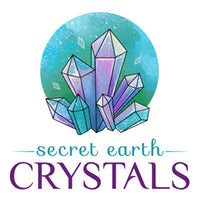AVENTURINE
Specifications
Mineral Class: Quartz
Crystal System: Trigonal
Hardness: 6.5 - 7
Luster: Vitreous and Waxy
Diaphaneity: Translucent
Colors: Green, Red, Orange, Brown, Yellow, Blue, Gray
Symbolizes: Prosperity
Source: Brazil, China, India, Italy, Russia, Nepal, and Tibet


A variety of quartz, Aventurine commonly forms in green, but also occurs in red, orange, brown, yellow, blue, and gray. Aventurine's colors are caused by trace elements of fuchsite, a chromium-rich variety of muscovite, as well as, hematite or goethite in an otherwise colorless quartz. These additions to Aventurine establish the different variations found within it. Aventurine gets its name from the Italian word, “a ventura” meaning “by chance”, possibly owing to its lucky discovery of Aventurine glass in the 18th Century. Colloquial stories place the discovery and name by a Murano Glass workmen, accidentally letting copper fillings fall into the molten glass, naming it, “avventurino".
Aventurine is a common stone, generally used in landscaping and gardening for its appealing earthy colors. Aventurine is often carved into many things and used for many purposes because it has a good level of hardness. Jewelry is a popular way Aventurine is carved, as well as statement pieces and because it forms in such large blocks, it is frequently used to make mosaics or flooring, alongside marble.
